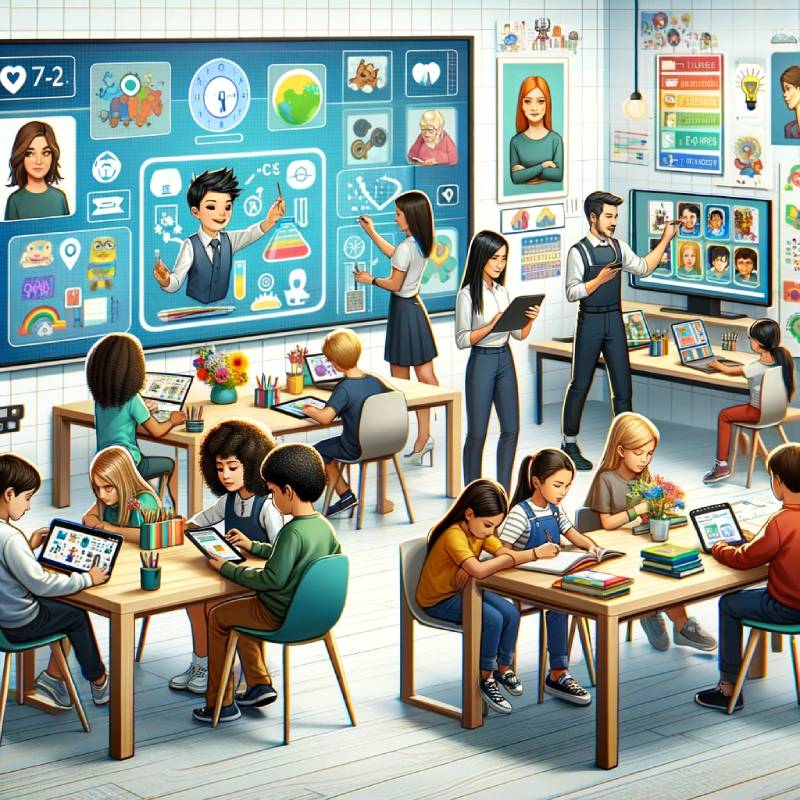Personalized learning is an educational approach designed to tailor learning experiences to individual students’ needs, skills, and interests. Here are some key aspects of personalized learning:
1. **Individualized Pace**: Learning is paced to suit each student’s capabilities. Some might move faster through topics they grasp quickly, while others spend more time on challenging sections.
2. **Customized Learning Methods**: Different students learn best in different ways. Personalized learning may involve various teaching methods, including visual aids, interactive tasks, or hands-on activities, depending on what works best for each student.
3. **Flexible Curriculum**: The curriculum might adapt based on the learner’s progress and interests. This flexibility can help maintain students’ engagement and motivation by allowing them to explore areas they are passionate about.
4. **Technology Integration**: Many personalized learning environments use technology, such as learning management systems, apps, and interactive software, which provide real-time feedback and adapt content automatically to suit the learner’s level.
5. **Teacher’s Role**: In personalized learning, teachers act more as facilitators or coaches, guiding students through their education journey rather than dictating it. This role involves a lot of observation, adaptation, and one-on-one interaction with students.
6. **Assessment**: Continuous assessment is a cornerstone of personalized learning, which helps track progress and identify areas needing additional support or acceleration.
The aim is to make education more relevant, enjoyable, and effective for each student, which can lead to improved educational outcomes and a higher level of student satisfaction.
Delving deeper into the components of personalized learning helps illuminate how it actively engages and accommodates individual learners:
### 1. Data-Driven Instruction
Personalized learning heavily relies on data to make informed decisions about how to best support each student. Teachers collect data from assessments, assignments, and interactions. This data informs not just the pace and style of instruction but also helps in identifying the strengths and weaknesses of each student. Analytics tools can help visualize progress and predict areas where students might struggle.
### 2. Adaptive Learning Technologies
These are sophisticated software tools that adjust the difficulty, format, and pace of learning materials based on real-time responses from students. For example, if a student excels in a particular type of math problem, the software might present them with more challenging problems or move on to a different topic. Conversely, if a student struggles, the program can provide additional practice and resources tailored to their specific needs.
### 3. Learning Pathways
In personalized learning, each student might have a unique learning pathway that includes a variety of learning experiences such as projects, reading assignments, interactive simulations, and more. These pathways are not fixed and can evolve based on the student’s progress, interests, and future educational or career goals. This approach not only enhances learning but also empowers students by giving them a say in their educational journey.
### 4. Competency-Based Advancement
Rather than advancing based on age or grade level, students move forward based on their mastery of a subject. This means that a student does not move on until they fully understand the current material, ensuring a solid foundation is built for advanced topics. This method can be particularly effective in preventing learning gaps and ensuring that all students reach their maximum potential.
### 5. Role of Teachers and Mentors
In a personalized learning environment, teachers spend less time lecturing at the front of the classroom and more time interacting with students on a one-on-one basis. They become mentors who guide students through their educational paths, provide support and encouragement, and challenge them with tasks that stimulate critical thinking.
### 6. Collaborative Environments
Personalized learning also encourages collaboration among students. Through group projects and discussions, students learn from each other’s perspectives, contributing to a deeper understanding and more diverse educational experience. This collaboration can be facilitated by technology or occur in traditional classroom settings.
### 7. Challenges and Considerations
Implementing personalized learning is not without challenges. It requires significant resources in terms of technology, training for educators, and time for planning and assessment. There’s also the challenge of ensuring equity, as not all students may have the same access to technology or support at home.
The overall goal of personalized learning is to provide a more adaptive and responsive education that prepares students for the complexities of the modern world, catering to their individual learning styles and preparing them for personal and professional success.

